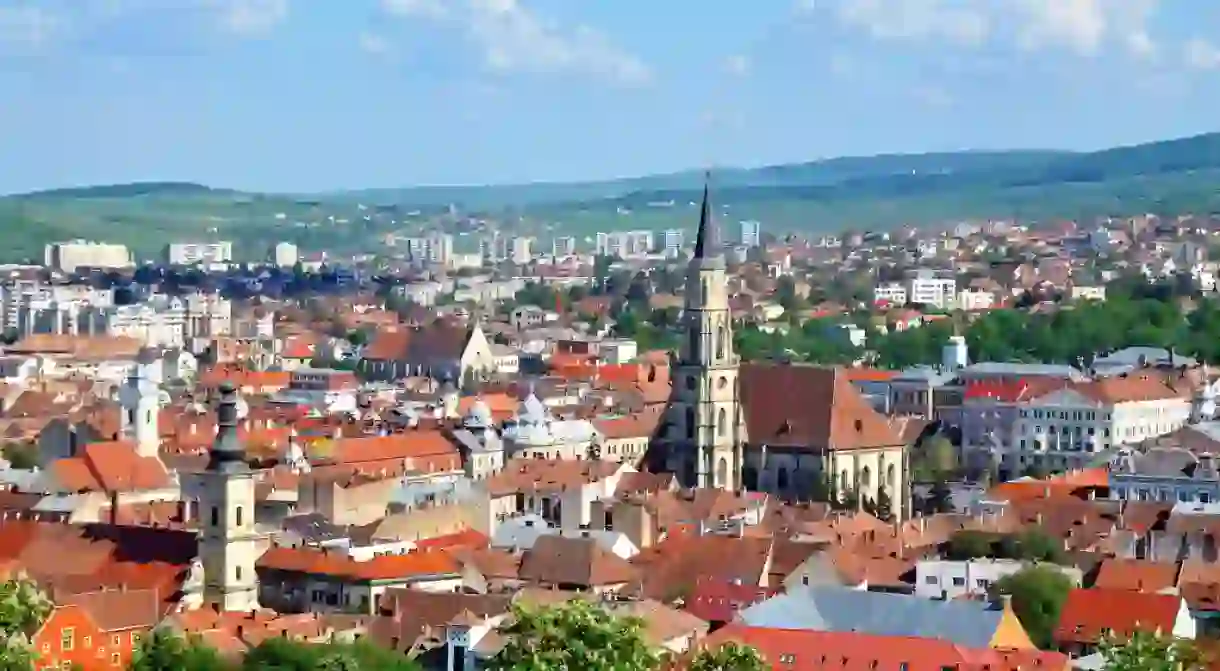10 Great Reasons You Should Visit Cluj-Napoca

No trip to Romania is ever complete without a visit to its bustling capital, Bucharest. But if the epicenter of the country’s economic and cultural life has everything for everyone, Cluj might just have that little extra something to make it unforgettable. Here are ten reasons why you should pick Cluj over Bucharest, at least once!
To experience Transylvania
Cluj-Napoca, known simply as Cluj, can be your gateway to Transylvania, a region whose beauty and mystery live up to its reputation. You can start off exploring in Cluj and continue to Sighișoara, the most well-preserved inhabited citadel in Europe, whose old center is a UNESCO Heritage Site, head to the Apuseni Natural Park or descend towards Sibiu and Brașov. Along the way, you will see picturesque villages, amazing mountain scenery, and experience local culture in all its forms.
https://www.instagram.com/p/BWeOZTTAnAF/?tagged=sighisoara
The food is delicious
When in Cluj, sampling local specialities such as à la Cluj,a sort of deconstructed sarmale, is a must. But of late the city’s vibrant restaurant scene has become even more varied, with cafés, bistros, and quirky restaurants taking over the city’s old center area.
https://www.instagram.com/p/BQ8fOpfB-Bg/?taken-at=295277206
Life has a slower pace
According to locals, the pace of life is gentler in Cluj, despite it being the second most populous city in Romania, after Bucharest. Also, a national stereotype says that the inhabitants of the historical region of Ardeal – another name for Transylvania – are soft spoken, more patient and friendlier than Romanians living in the southern regions. Whether that’s true or not for you, that will need to be assessed during your visit to Cluj!
https://www.instagram.com/p/BUn2iGMFQfp/?taken-by=discovercluj
The city is less touristy
Although the city gets crowded during the film and music festivals that the city hosts in spring and summer, Cluj is definitely a less touristy destination than Bucharest. This means you will have all of the city’s many cultural attractions almost to yourself. Walk the city’s central streets and you will discover buildings in Gothic style, such as the Franciscan Church, the house of Matthias Corvinus, and the Saint Michael Church, the second largest Gothic church in the country.
https://www.instagram.com/p/BWfBuNgh0sd/?tagged=cluj
A visit to Romulus Vuia Museum of Ethnography, the oldest open-air museum in the country, will allow you to discover Transylvania’s rich folk life without even leaving the city. Also located in the center, the art museum housed in the Bánffy Palace, an 18th-century Baroque building, will introduce you to the most important Romanian masters.
You will make more of your lei
For the winter skiing
When visiting in winter, there’s no better vantage point to admire the city skyline than the top of the ski slope on Feleacu hill. Located just 12 kilometers from Cluj, it offers an 800-meter slope with an elevation of 100 meters, a smaller slope for beginners and a Snowpark. Buscat Ski Resort, 54 kilometers from Cluj, has three slopes and amazing views.
https://www.instagram.com/p/BWf3JO4lHQj/?tagged=cluj
The Botanical Garden has more to offer
In the battle of the botanical gardens, some say Cluj may have the upper hand. Although Bucharest and Cluj have roughly Botanical Gardens of about the same size and have on display around 10,000 species of plants, what makes the difference in Cluj are the Japanese and the Roman gardens. The former, complete with a brook and a Japanese-style house, is best visited in spring when is surrounded by blooming trees, while the latter is a joy in any season, and includes archeological remains from the time Cluj-Napoca was a Roman colony.
https://www.instagram.com/p/BTy8wXqhyNo/
The water sports on Lake Tarnița
Located 30 kilometers northwest of the city, Lake Tarnița is a major point of attraction in the summer. Water sports lovers flock to the lake, a 70-meter reservoir fueled by the waters of Someșul Cald River, to swim, waterski, and, if brave enough, compete in a triathlon. The swimming stage of the triathlon organized by local sports organizations, now in its third edition, is held on Lake Tarnița.
https://www.instagram.com/p/BV87rOagxH6/
Catch festival fever
For three weeks, every year, all eyes turn on Cluj, when the city hosts the three of the country’s major festivals. The Transylvania International Film Festival (TIFF), a launching pad for Romanian films features and usually the place where the local public gets to see the features of the New Wave of Romanian directors straight after Cannes. Electric Castle, held in July at the Bánffy Castle, near Cluj, and Untold, have become a little bit of a phenomenon, gaining a loyal following and attracting the best DJs year after year.
https://www.instagram.com/p/BNfSrPeB0wf/?taken-by=untoldfestival
Have fun underground
One of the biggest attractions in Romania, Turda salt mine hosts an amusement park in its belly, complete with a ferris wheel and an underground lake on which you can row a boat. Spending time inside is associated with multiple health benefits; that is why the mine has different areas where you can play sports, such as handball, basketball, and ping pong.
The salt formations found there, displayed in layers of between 250 and 1,200 meters, were formed 13 million years ago. The salt mine, which dates from 50 BC, was first mentioned in 1075, and has shaped the lives and culture of people living in the area.
https://www.instagram.com/p/BWPpQqjAeXD/?tagged=salinaturda













